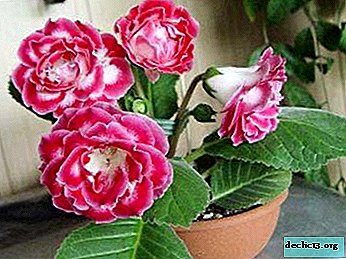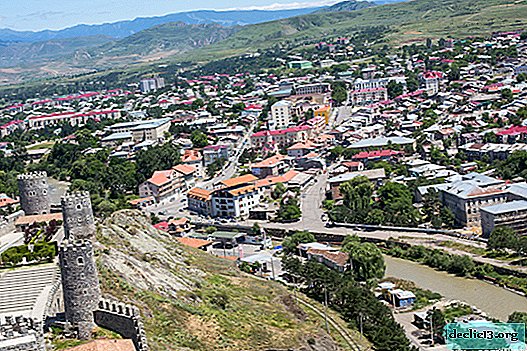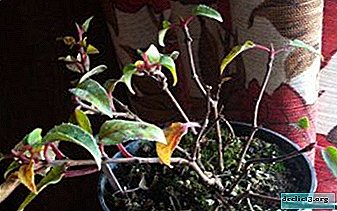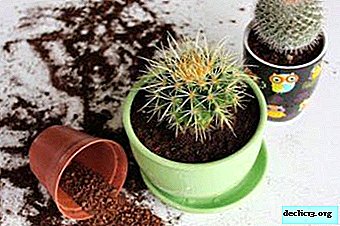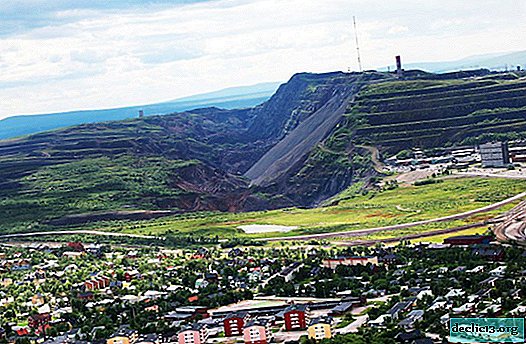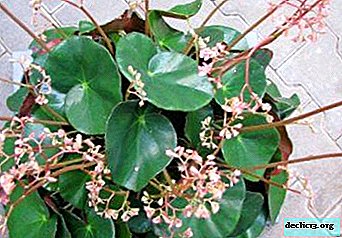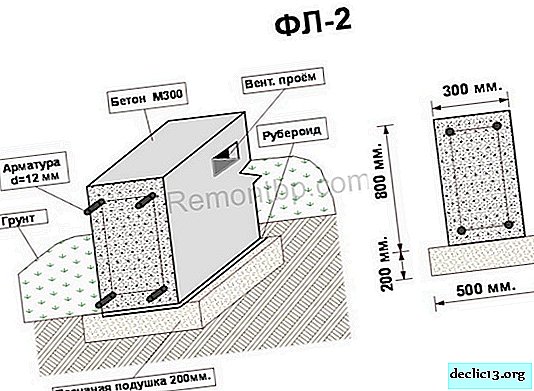What is daursky rhododendron: a detailed description and photo of a wonderful plant

It is worth meeting Rhododendron once in nature, especially when it blooms in its natural conditions, of course, you will immediately want to have it in your area. Its flowering is just beautiful.
This Ledum and the amateur gardens of our summer residents began to conquer. The name Ledum is not quite correctly applied to this plant, although both the Daurian rhododendron and Ledum Bolotny belong to the same heather family.
It is good that it is quite possible to grow such a wonderful decorative shrub in your garden, you just need to provide him with proper care. In translation, Rhododendron means "rosewood."
Brief definition
Daurian Rhododendron is a perennial, abundantly branching shrub with beautiful flowers.belonging to the heather family. Distributed in the open spaces of the Far East, Siberia and Transbaikalia, it pleases its lush flowering for two months. Sometimes you can meet in a spacious meadow a huge carpet of blooming Rhododendron - an unforgettable sight.
Detailed description
This shrub usually reaches a height of 2 m, blooms from early April to early June.
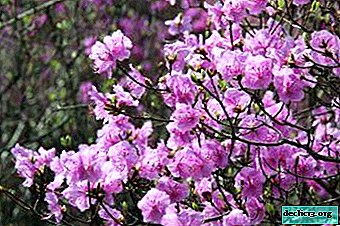 Leaves its oval shape, leathery, appear on the bush only after flowering. Therefore, in the spring it looks like a continuous flowering monolith (thanks to the still sprawling dense crown). The color of the young leaves is bright green, then they darken, and the lower side acquires a gray-green or brown hue.
Leaves its oval shape, leathery, appear on the bush only after flowering. Therefore, in the spring it looks like a continuous flowering monolith (thanks to the still sprawling dense crown). The color of the young leaves is bright green, then they darken, and the lower side acquires a gray-green or brown hue.- Flowers it has the shape of a funnel, similar to a bell, quite large, with a diameter of about 4 cm. These bright purple flowers are collected in lush inflorescences.
- Fruit - ripen in August - September in the form of a dry box with seeds.
- Root system Rhododendron is superficial.
History of occurrence
Rhododendron is considered a very ancient plant that existed 50 million years ago, and the birthplace of its appearance is China and India. In Russia, it began to be used to decorate sites in the 19th century.
Healing properties
This plant has unique medicinal properties, on the basis of which many drugs are produced that have analgesic, soothing, bactericidal and antipyretic effects. Also successfully use rhododendron in folk medicine, it helps:
- with a headache;
- nervous disorders;
- radiculitis;
- with inflammation of the mucous membranes;
- with gastritis.
Of course, this is not the whole list, the abilities of this plant are simply magical.
Interesting Facts
Rhododendron is certainly a very curious plant:
- it is interesting that it can grow even at an altitude of 6 thousand meters above sea level;
- It is an excellent soil-protective plant;
- has strong essential oil properties;
- some people use petals to make various snacks and salads.
What is the difference from the rest of the species?
Reference! Daurian rhododendron differs from other species in the color of its leaves, the lower side of which is brown or gray-green in color. Also, in this species, the color of the bark on the branches is gray - this is also its characteristic feature.Below you will find a description of two subspecies of this rhododendron: Ledum and April Jam.
Subsorta: description and photo
Rhododendron daursky has its own subcountry, the most interesting of them are described below, and photos of flowers are also shown.
Ledum

Ledum - common in the Far East and in the south of Eastern Siberia, loves to grow under the canopy of larch, the flowers are bright pink or lilac.
April Jam

April Jam is a wonderful shrub with large double flowers of white color, it has good winter hardiness, usually reaches a height of 1 - 1.5 m, blooms for two months.
Bloom
The peculiarity of the flowering of Rhododendron daursky is that it begins earlier than in all other species - from the beginning of April. Flowering is very plentiful, even branches are not visible at this time - the whole bush consists of bright hats of flowers, they bloom at the tips of branches.
- Care before and after flowering - this shrub grows rather slowly and blooms about five years after planting, you should always take care of the shrub, observing all the rules for care, and after flowering it is imperative to prune.
- What to do if it does not bloom - if the plant does not want to bloom, most likely the place of planting is incorrectly selected, transplant it.
Use in garden design
The shrub will look great in any corner of your garden plot, but it is important to consider its preferences.
Important! Rhododendron loves the neighborhood with any conifers, it will successfully shade the pine, larch, lilac, barberry, you can plant 3 bushes nearby or plant a whole row along the wall. The main thing to remember is that the shrub likes places protected from the wind.Step-by-step care instructions
Let's take a closer look at all the main points of caring for Rhododendron:
- Choosing a landing place - the place for it needs to be bright or in a light shade, you can not plant it in a lowland where stagnation of water is possible.
- Which should be the soil - weakly acidic or peaty soil will be ideal, but fertile garden soil is also suitable, only good drainage is necessary, the shrub cannot grow in clayey heavy soil.
- Landing - you need to plant a shrub in the spring, but it is better to prepare a planting pit under it from autumn or at least a month before planting, the pit should be at least 70 cm deep and at least half a meter wide, add a substrate to it, which is made up of: peat, compost, sand, sheet soil, humus and coniferous litter.
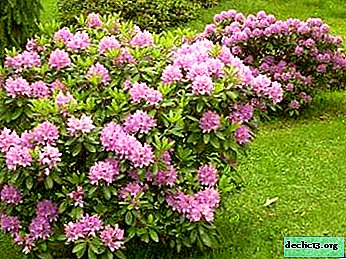 pour drainage from broken bricks or gravel at the bottom);
pour drainage from broken bricks or gravel at the bottom);- We dig a seedling, making sure that the growth point does not appear underground;
- then we form a near-trunk hole, water it and immediately mulch it (with bark or coniferous sawdust).
- Temperature - the minimum temperature that this species is able to withstand is 40 degrees below zero, the maximum is about 35 degrees, the most optimal temperature is in the range from 10 degrees below zero to 20 degrees below zero.
- Watering - it is required only in the summer heat, during this period it is necessary to water the plant 1 or 2 times a week, moreover, each watering should consist of two buckets of water, the water should be rain or softened tap water, also the bush must be watered before the onset of frost, this will provide him with a good wintering.
We must not forget that the shrub likes air humidity, so frequent spraying will only benefit (only do not spray on the flowers).
- Top dressing - firstly, you need to add a bucket of peat and a compost bucket for each bush every spring (in the spring), also during the flowering period you will need to additionally water it with a solution: dissolve 1 tablespoon of urea and the same amount of potassium sulfate in a bucket of water, pour 3 under one bush liter.
After flowering, you need to water the bush with this solution: dissolve one tablespoon of superphosphate and potassium sulfate in a bucket of water, 5 liters are required for one bush.
- Pruning - do not abuse the pruning, you just need to remove all faded brushes so that they do not interfere with further growth and do not spoil the decorativeness of the bush, in the autumn you can shorten all shoots by 25 - 30 cm for stronger bushiness.
- Transfer - transplantation is necessary only as a last resort, Rhododendron does not like to be disturbed, it is better to immediately choose a suitable place for it, but if there is no way out, you need to transplant the bush in the spring, dig out very carefully, trying not to disturb the root system and transfer it to a previously prepared landing pit.
How to propagate?
Attention! This species of Rhododendron is most successfully propagated by layering, and it can also be propagated by seeds and cuttings.In the spring, a side shoot (you can take several at once) is dug into the ground - into a hole to a depth of about 10 cm, this place must be fixed with a hairpin and kept constantly in a wet state.
Next spring, you can already separate and plant a young bush separately. Propagation by cuttings and seeds is much more troublesome., usually professionals do this.
Diseases and Pests
Red spots may appear on the leaves along the veins - you need to urgently make potassium nitrate. This shrub also loves the bug, you can help - treat with Diazinon. The best prevention for all problems is proper care.
Conclusion
We can safely say that Daurian rhododendron has a strong Siberian character, persistent and seasoned. This hardy and very lively plant, copes with various negative weather surprises. You just need to help him a bit, take care, and in return you will receive your “purple sea” as a present - incomparable blossoming beauty. Here is a sign of spring!

 Leaves its oval shape, leathery, appear on the bush only after flowering. Therefore, in the spring it looks like a continuous flowering monolith (thanks to the still sprawling dense crown). The color of the young leaves is bright green, then they darken, and the lower side acquires a gray-green or brown hue.
Leaves its oval shape, leathery, appear on the bush only after flowering. Therefore, in the spring it looks like a continuous flowering monolith (thanks to the still sprawling dense crown). The color of the young leaves is bright green, then they darken, and the lower side acquires a gray-green or brown hue. pour drainage from broken bricks or gravel at the bottom);
pour drainage from broken bricks or gravel at the bottom);
